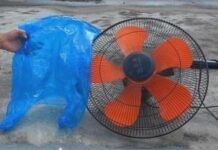It’s undeniable that makeup sponges play a crucial role in achieving a flawless base. However, many people underestimate the importance of proper sponge cleaning, which can lead to various skin issues. Let’s delve into this article to explore the right way to care for your makeup sponges.
1 How to Clean Your Makeup Sponge
Just like any other makeup tool, it’s essential to clean your sponges regularly to remove bacteria and prevent skin inflammation.
Here’s a step-by-step guide to cleaning your makeup sponge:
Step 1: Prepare a Bowl of Warm Soapy Water
 Prepare a bowl of warm soapy water
Prepare a bowl of warm soapy water
Pour some warm water into a bowl and add a small amount of specialized makeup brush cleanser or a gentle soap. Stir the mixture until soap suds form on the surface. Avoid using dish soap or harsh detergents as they can irritate your skin.
Step 2: Soak the Sponge for About 30 Minutes
 Soak the sponge for about 30 minutes
Soak the sponge for about 30 minutes
Place your sponge in the soapy water and gently squeeze it to remove excess makeup. Let it soak for approximately 30 minutes.
Step 3: Rub Soap into the Sponge
 Rub soap into the sponge
Rub soap into the sponge
Using your fingers, gently work the soap into the sponge to remove any remaining dirt. Be careful to only use your fingertips and avoid using brushes or sponges, as they can damage the sponge.
Step 4: Rinse the Sponge Thoroughly
 Rinse the sponge thoroughly
Rinse the sponge thoroughly
Rinse the sponge under running water until all the soap is removed. Pay close attention to the water running off the sponge; once it runs clear, you can move on to the drying step.
Step 5: Dry the Sponge
 Dry the sponge
Dry the sponge
Squeeze gently to remove excess water, and then roll the sponge on a clean paper towel to absorb any remaining moisture. If the sponge still feels damp, let it air dry in a well-ventilated area before using it again.
2 How Often Should You Wash Your Makeup Sponge?
 Regular sponge cleaning helps prevent skin irritation
Regular sponge cleaning helps prevent skin irritation
The frequency of washing your sponge depends on your usage. If you use it daily, it’s recommended to clean your sponge every 2-3 days. For occasional makeup users, washing the sponge once every two weeks is sufficient. Keeping your sponge clean makes makeup application easier and helps you achieve a flawless base while preventing skin inflammation.
Sponge hygiene is crucial to the success of your makeup routine. We hope that this article has provided you with valuable insights on how to properly clean your makeup sponges.
makeup-sponges-tips-and-tricks/’ title=’Achieving a Flawless Look with Makeup Sponges – Tips and Tricks’>Achieving a Flawless Look with Makeup Sponges – Tips and Tricks
 Sponges – Tips and Tricks’>
Sponges – Tips and Tricks’>With the help of makeup sponges, women can now master the art of creating a flawless base look. Get useful tips on how to make the process quick and easy.
Is Coconut Oil Really Good for the Skin as Rumored?
 Skin as Rumored?’>
Skin as Rumored?’>If this is your first time using coconut oil on your face, please test it on other areas of your skin to check for possible allergic reactions.












